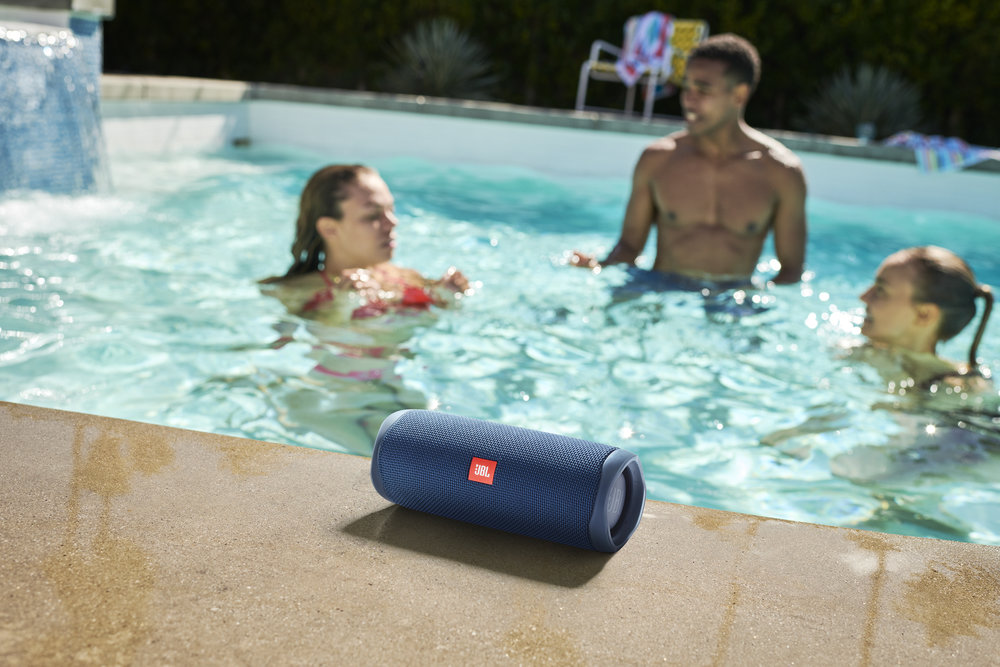It’s summertime and for most people, this season represents trips to lakes, beaches, pools, or even running through sprinklers- after all, we don’t judge. You wouldn’t want your beautiful day ruined by a drink spill or your clumsy hands. I’m well aware of how bad things get when gadgets and water meet. Growing up, I always heard one thing constantly- don’t let the devices near water. This was true for a long time until companies started making tech gadgets that could last even in a thunderstorm.
The durability of most tech gadgets is measured on the IP(Ingress Protection) scale, which indicates its resistance to water and dust. Most high-end smartphones and watches come with an IP67 or IP68 rating, but what does that mean?
The International Electrotechnical Commission sets the IP ratings, which tell you the level of protection a device offers against solids and liquids. The first number ranges from one to six and tells you the device’s level of protection against solid particles(dust, dirt, etc.). The second number goes from one to eight and tells you how much water a device can handle. The rubber seals that protect the high-rated IP phones from damage usually get eroded with time when met with coffee, champagne, or soft drinks, and this is why all gadgets must be handled with care despite their IP ratings to last long.
Here are the gadgets that perform best against water:
JBL Flip 5
Pool party? Perfect. Sudden cloudburst? Covered. Bash on the beach? It couldn’t get any better. JBL Flip 5 is an IPX7 waterproof portable device three feet deep and provides fearless outdoor entertainment.
You get 12 hours of playtime to keep the music going longer and louder. The device also uses a new driver designed to create better-sounding bass, and the PartyBoost feature allows you to pair two speakers together for stereo sound to pump up your party.
Apple Watch Series 7
In line with Apple’s commitment to the environment, Apple Watch 7 is made entirely of recycled rare earth elements in all magnets, including the taptic engine. Also, Watch 7 is made without harmful chemicals like mercury, PVC, beryllium, and BFRs.
Apple says that the watch was designed with swimmers in mind and is water-resistant up to 50 meters. This means you can take the watch with you in pools and, in some cases, even in the ocean. However, you cannot use it for diving purposes where it may encounter higher pressures or low temperatures than it’s rated for under the ISO.
Insta360 GO2
There has been a surge in 360-degree cameras, which use two lenses to capture the entire scene. Insta360 GO2 has a stunning IP8 4 rating, which means it can go down to 4m without a case. You can take this camera underwater, take immersive videos of yourself at the beach and pop it into the app, and even colour correct it.
Insta360 can record videos at 1440p and take up to 150 minutes of video per charge, and its internal battery can be recharged by plugging the USB cable into the adapter.
Samsung Galaxy S22
Your smartphone goes almost everywhere you go. Cooking dinner? There’s a high chance your phone will get to see the recipe too. At the beach? You can use it to listen to good music. At a park? You’ll likely read a book on your smartphone screen. You do not worry about your PC getting all wet in the rain, but it is a genuine concern with smartphones.
The Galaxy S22, Galaxy S22+, and S22 Ultra come with an IP68 resistance rating. This does not necessarily mean that they are waterproof, but they are water-resistant and durable. This translates to Galaxy surviving up to 1.5 meters of water submersion for 30 minutes.
If your S22 falls in the sink, gets submerged in the pool, or gets caught in a rainstorm, it would do fine.
GoPro Hero Session
GoPro has become synonymous with adventure, so much so that you can never plan on doing a sport and not miss the GoPro. The GoPro Hero Session can capture 1440p footage at 30fps and 1080p footage at 60 frames per second. It is very lightweight and can go underwater up to 33 feet.
GoPro camera bodies have a rugged, waterproof design, making them an amazing camera for underwater sports. You can attach the Hero Session to your helmet or bike and get the first view of the adventure that you are in.
Conclusion
Look, you should not let terms like ‘waterproof’ and ‘water resistant’ fool you when it comes to technology. All tech devices are electronic devices and should be avoided against water except for devices specifically made for the purpose. The good part is that waterproof devices have helped people get a little more relaxed when buying expensive devices.
